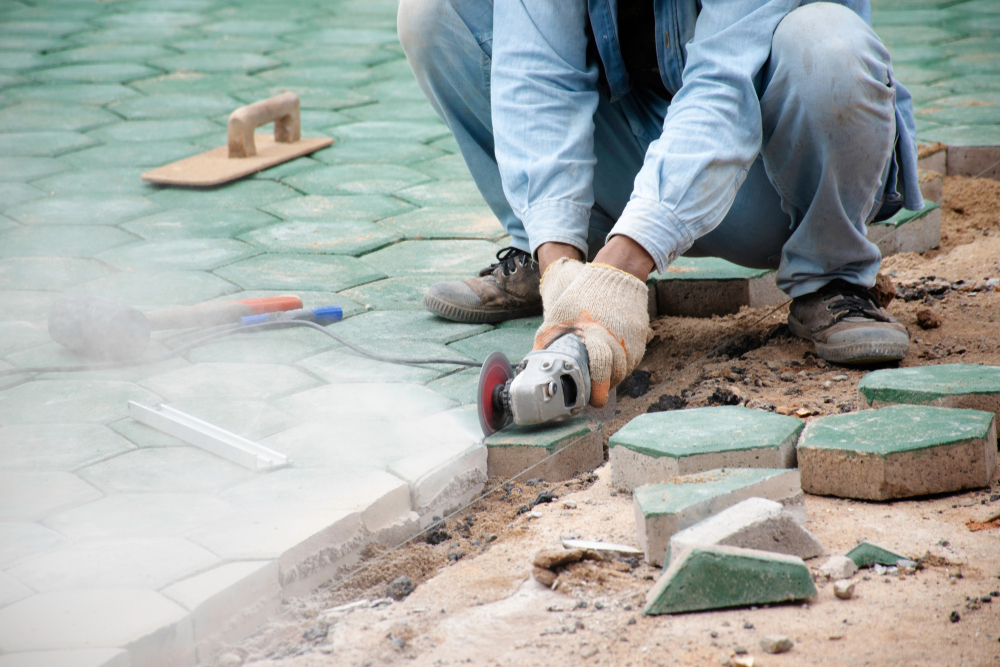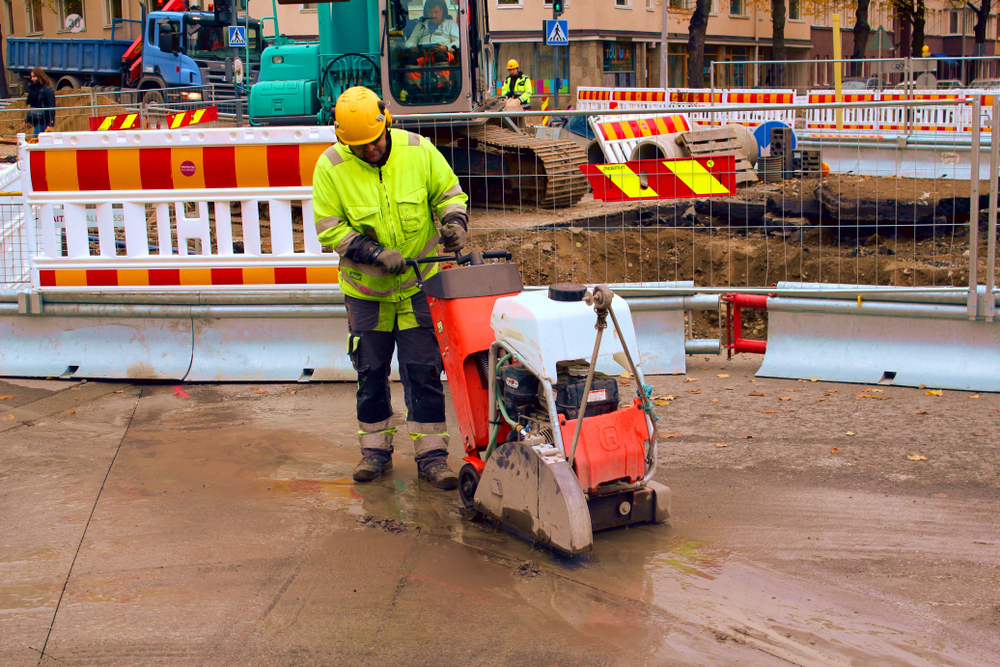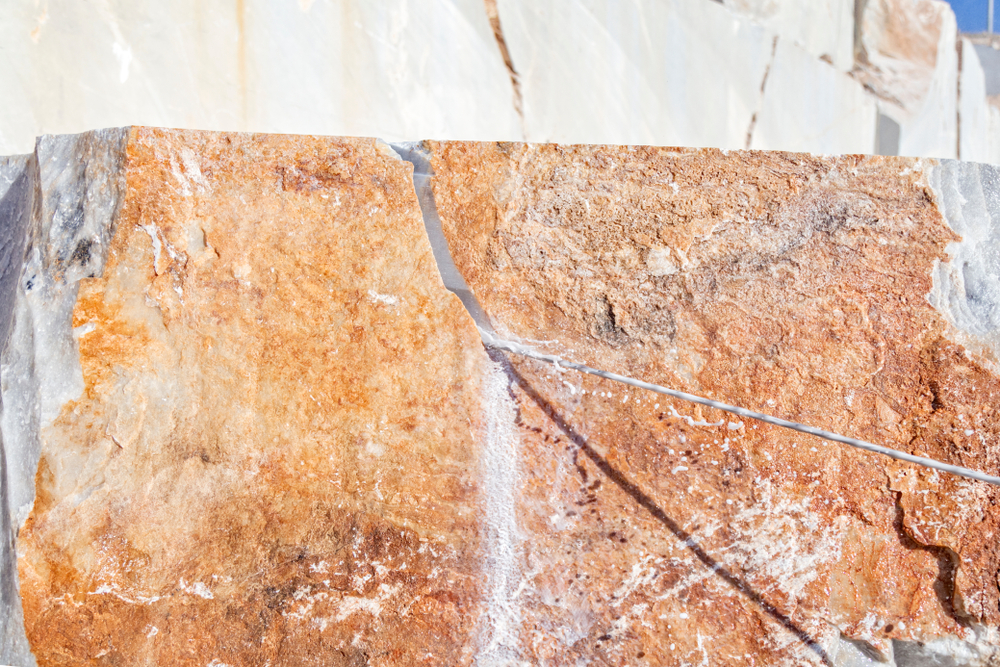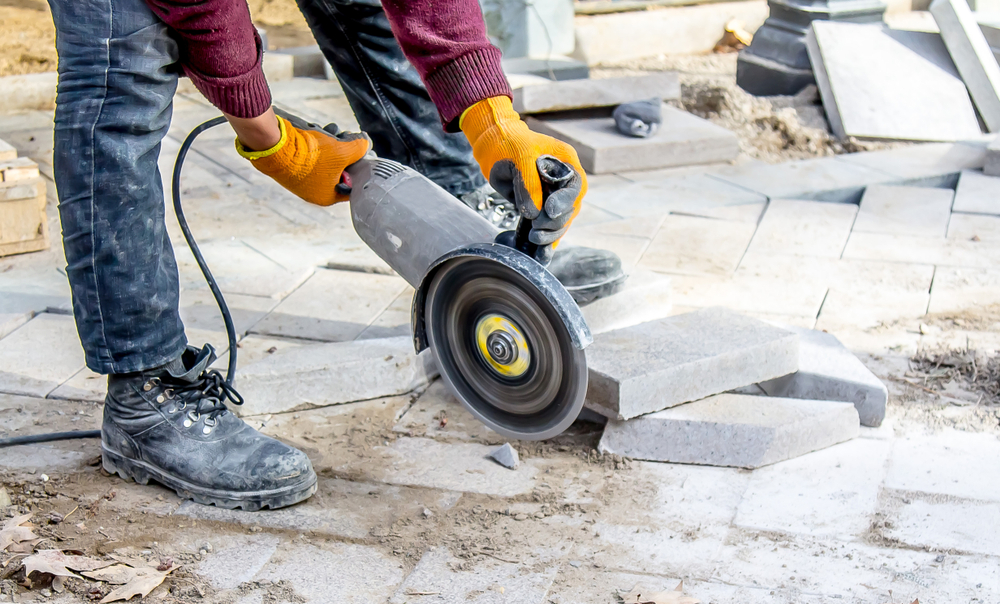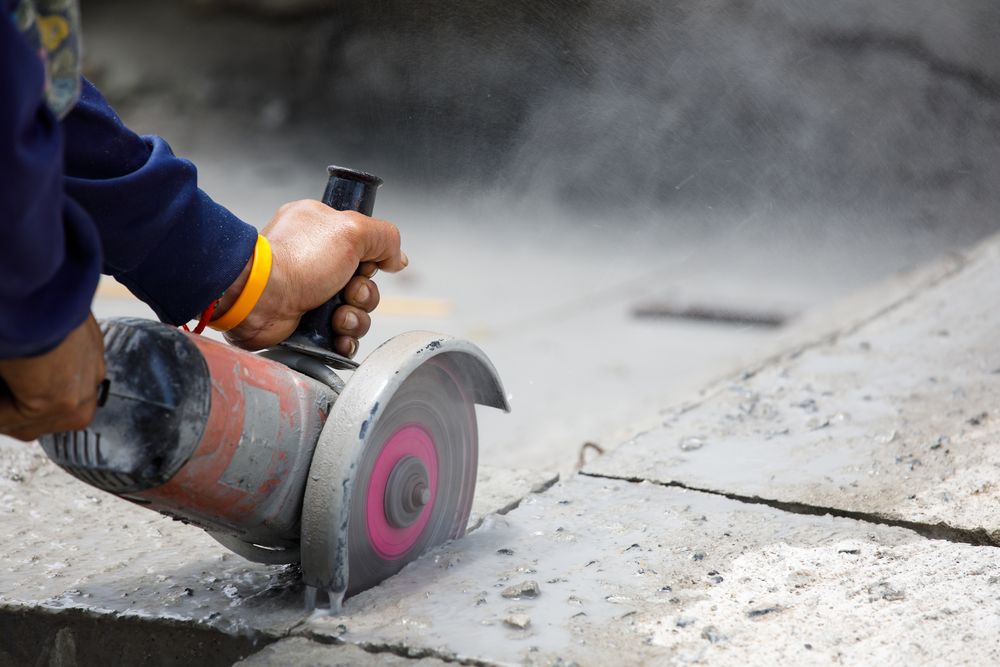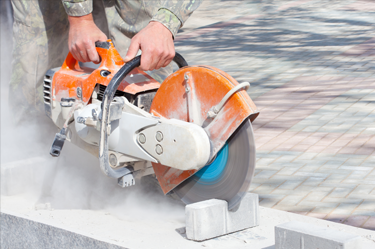Circular saws are powerful and can cut through almost anything. However, cutting in a straight line with them can be tricky, especially when you are making freehand cuts.
Circular saws use abrasion to make cuts and this means it can be tricky to keep the direction of the saw perfectly accurate.
If you want to make a perfectly straight cut through a long piece of concrete (such as a wall, or even just large paving stones), you should not rely on guesswork alone.
The tips below will help you to keep your cuts true and straight.
Use a Guide Line
Instead of guessing, draw a thick guideline with a ruler so that you have something to aim for and to help you keep the cut accurate.
Hold the Saw Properly
If you are cutting an object that is laying flat on the ground, hold the saw with one hand on the handle, and the other on the shoe.
Press your thumb against the tab on the shoe and put your index finger underneath the board you are cutting. The handle of the saw should be facing you, with the blade behind the shoe.
This will ensure that you have good control of the blade and that your fingers are properly protected.
Keep the Saw Lubricated
If you are cutting concrete, you will find that the saw performs much better if it is lubricated properly. Use water to wash away any dust, cool the blade and keep it performing at its best.
If you feel that the saw is starting to ‘chew’ when cutting, consider replacing the blade. A fresh diamond blade will cut more quickly and will be more likely to cut true as well.
For Smaller Cuts, Use a Straight Edge as a Guide
An alternative is to use a straight edge as a guide. This can be a good option if you are just cutting a small block. Use a piece of straight wood as a ‘fence’.
Position the wood so that when you are cutting, the fence acts as a guide and stops the saw from going off course.
The blade will be able to cut the wood that you are using as a guide just as easily as it can cut the concrete, it is not a ‘barrier’, it is simply a guide to help keep the blade on track.
If you use this method, remember that you should push the saw against the straight edge, rather than pulling the saw towards you.
The straight edge is a guide and will keep the saw moving smoothly.
When Cutting to Increasing Depth, Use Dry Cuts
As mentioned earlier, when cutting thick, strong materials you might want to use water to lubricate the blade as you cut. This will allow the blade to move more quickly and smoothly.
If, however, you are making a series of cuts that are increasing in depth each time, use a dry-cutting blade instead.
Gravity is Your Friend
If you ever need to make a cut into a wall, cut down, not up. This will help you a lot because gravity will be on your side, pulling the saw straight down, so you are less likely to end up off-course.
Circular saws are a great time-saving tool. Set your guides up properly to begin with and the saw will do all the work for you.
Make sure that you are using a good blade, and wearing proper safety gear at all times.
If you are looking for a specialist concrete cutting company who uses only the best practices to get the job done right, then please call us at Megasaw on 1300 920 419 or contact us through our website.

